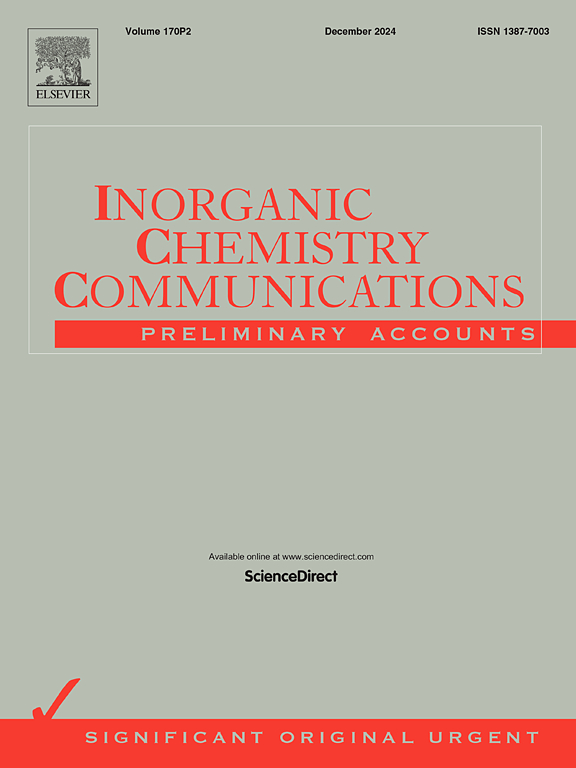A facile fluorescence Zr-MOF probe for selective sensing tetracycline in water
IF 4.4
3区 化学
Q1 CHEMISTRY, INORGANIC & NUCLEAR
引用次数: 0
Abstract
Tetracycline(TC), owning to its widely utilized as an antimicrobial agent, has become one of the prevalent contaminants in aquatic environments. Consequently, developing precise methods for detecting TC residues in water is crucial. Herein, we present a facile method for TC fluorescence sensing utilizing Zr-MOF (MOF-808). MOF-808 exhibits exceptional luminescence properties, maintaining stability in water for up to 10 days and across a broad pH range of 3–12. Detection results indicated that MOF-808 served as an efficient luminescent probe for TC detection in aqueous solutions, demonstrating high sensitivity with a low detection limit of 7.26 nM and a rapid response time within 10 s. Notably, MOF-808 displayed high selectivity for TC over other common anions and metal cations in water. The sensing mechanism was elucidated through comprehensive analysis, revealing that the internal filtration effect (IFE) induced the fluorescence quenching of MOF-808. The interaction between TC and MOF-808 was crucial for the preconcentration of TC, leading to a swift fluorescent response with high quenching efficiency. The practical applicability of MOF-808 was further confirmed by its successful detection of TC in real environmental water samples.

一种简便的选择性检测水中四环素的荧光Zr-MOF探针
四环素作为一种广泛应用的抗菌剂,已成为水生环境中普遍存在的污染物之一。因此,开发检测水中TC残留的精确方法至关重要。本文提出了一种利用Zr-MOF (MOF-808)检测TC荧光的简便方法。MOF-808具有优异的发光性能,在水中保持长达10天的稳定性,并在3-12的广泛pH范围内保持稳定。检测结果表明,MOF-808是一种高效的荧光探针,具有较高的灵敏度,检测限低至7.26 nM,响应时间在10 s以内。值得注意的是,MOF-808对TC的选择性高于其他常见阴离子和金属阳离子。通过综合分析,阐明了MOF-808的传感机理,揭示了内部过滤效应(IFE)诱导MOF-808的荧光猝灭。TC与MOF-808之间的相互作用对TC的预富集至关重要,导致了快速的荧光响应和高猝灭效率。MOF-808在实际环境水样中对TC的成功检测进一步证实了MOF-808的实用性。
本文章由计算机程序翻译,如有差异,请以英文原文为准。
求助全文
约1分钟内获得全文
求助全文
来源期刊

Inorganic Chemistry Communications
化学-无机化学与核化学
CiteScore
5.50
自引率
7.90%
发文量
1013
审稿时长
53 days
期刊介绍:
Launched in January 1998, Inorganic Chemistry Communications is an international journal dedicated to the rapid publication of short communications in the major areas of inorganic, organometallic and supramolecular chemistry. Topics include synthetic and reaction chemistry, kinetics and mechanisms of reactions, bioinorganic chemistry, photochemistry and the use of metal and organometallic compounds in stoichiometric and catalytic synthesis or organic compounds.
 求助内容:
求助内容: 应助结果提醒方式:
应助结果提醒方式:


